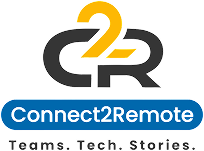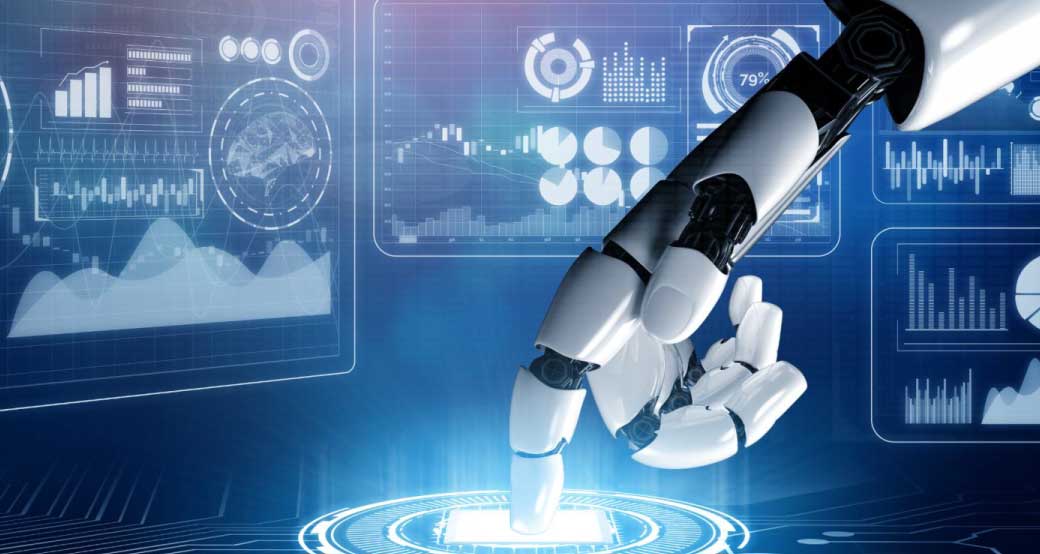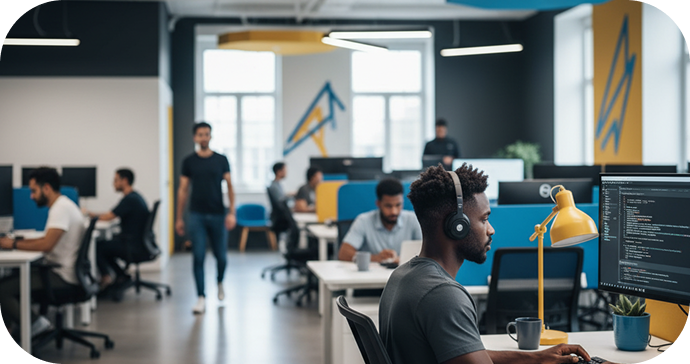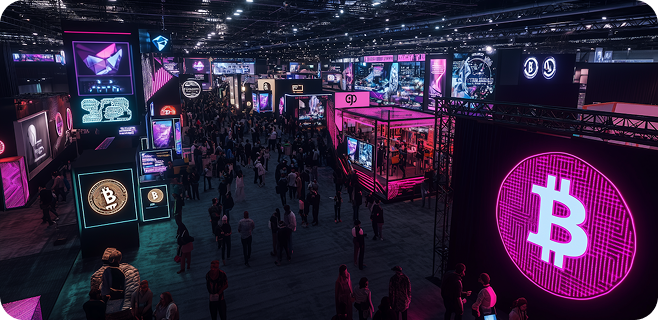The AI Revolution is Here: Beyond the Hype and Headlines
It is hard to ignore. Artificial intelligence has moved from science fiction to bless our daily workflow. The headlines are sunny, depicting an enchanting dream world painted with Alice in Wonderland’s brush, featuring employees in gigantic playgrounds leaving stupefied enemy agents from the past, crawling up from their graves. Sometimes, we are boxed in from all four corners of everyday sitting around dining tables and thankful that the four-day working week is a near possibility.
Not Just Automation, But Augmentation: How AI is Becoming a Co-pilot for Work
For many years, the debate on jobs and artificial intelligence was all about automation. We envisioned robots taking over jobs of factory workers and algorithms performing tasks swiftly. Although that shows some progress, the most immediate and deep change is now augmentation. AI has become less a replacement and more like a co-pilot.
AI excels at the boring, repetitive, data-heavy elements of our jobs. It can take seconds to probe huge amounts of data, draft preliminary reports, summarise extensive meetings, and keep calendars. None of these will ever replace the human practitioner, for it frees them to do that which they do best. A marketer spends less time on data crunching and more on creative strategy. A lawyer can spend less time on document review and more on complex legal arguments. A software developer can use AI to debug code faster, focusing on architectural design. Human-AI cooperation is the area with the greatest potential for productivity and innovation.
The Most Vulnerable Jobs: Which Roles Are at Highest Risk of Transformation?
To clarify, augmentation is the ultimate goal, while displacement is a very real concern. Jobs most susceptible to automation are those primarily based on predictability and repetition. Data entry clerks, telemarketers, and some assembly line jobs are now being increasingly replaced by AI and robotics. Even jobs like bookkeeping, paralegal work, and customer service have changed in many respects, with AI coming in to handle basic enquiries and transaction-based requests.
“Risk”, however, does not always connote “elimination”. More often than not, it indicates an evolution.” Over time, the job of a customer service agent, for example, is swapping something simple for complex business issues warranting an empathetic response: that the intelligent application should escalate.
The Jobs of Tomorrow: New Roles We Can't Even Imagine Yet
That is true; history records that such technological revolutions are not destructive; they create opportunities as well. For instance, the popularisation of personal computers resulted in the emergence of software engineers, IT support specialists, and digital marketers. And now, a new revolution of this scale can be expected to create new categories of work within the general area of AI. Already, some occupations are appearing, such as:
AI Prompt Engineers:
Those who really have the knack for chatting with the AI in order to obtain quality and specific results.
Machine-learning Ethicists:
These are individuals who keep AI systems fair, nonbiased, and transparent.
AI Integration Experts:
These are consultants who could assist in ending the process of making AI embed themselves into a company’s work processes.
Many of the most in-demand jobs of 2030 probably do not even have a title yet. They will sit at the intersection of AI and human needs.
The Skills Shift: Why "Learn to Code" is No Longer Enough
For a long time – one can even say over the years – “learning to code” remained the most advice that people used to give concerning careers. Despite the current value that technical skills still continue to have, artificial intelligence is automating a lot of simple coding tasks today. The new call is to the redefining of the imperative human cognitive and creative skills. Future workers will need to be ready to master:
Critical Thinking and Analytical Reasoning: Interpreting AI-generated data, questioning outputs, and making strategic decisions will be part of such abilities.
Creativity and Innovation:
Generation of new ideas, strategies, and content surpassing what an AI can offer.
Emotional Intelligence (EQ):
Team leadership when understanding the nuances of the customers as well as demonstrating empathy.
Adaptability and Lifelong Learning:
The capability to refuse to stop learning new tools and new ways of doing things.
The Human Edge: The Irreplaceable Skills AI Can't Replicate
This leads us to the essence of our human value offering. AI is a tool of logic and pattern recognition, trained from the data it has collected. AI cannot replicate the depths of human experience. Our human advantage is:
Solidarity and Compassion:
The capacity to feel with another being, to enter their life or somatic condition (pain not excluded) – critical for leadership, caregiving, and sales.
Strategic Vision:
Ability to think big and long-term, recognise market subtleties, and set a long-term direction for the company.
Ethical Judgement:
Competence to make decisions on ‘the right thing’ in ethical terms under ethical dilemmas and emotionally loaded conditions.
Creativity and Artistry:
When an unstructured burst of raw inspiration leads to a novel, a moving painting or a disruptive idea for a new business.
These are not soft skills; these are human skills in the age of AI.
A Corporate Responsibility: How Companies Can Ethically Navigate the AI Transition
Employees alone should not be responsible for the changes they are to face. Corporations bear a heavy duty to take the lead in the ethical management of this change. Part of that responsibility is the commitment to training and education of the existing staff whose jobs have been redefined.
Lifelong Learning is No Longer a Cliché: Embracing Continuous Education
Learn for 20 years, work for 40″ is a thing of the past. The skills decay rate is decreasing exponentially. The people who will thrive the most in the future are the ones that will adopt the habit of learning continuously. Not that one has to always go back to school for another degree anymore. It could be e-learning in artificial intelligence, going to a seminar on prompt engineering, or even just spending some time a week playing with new tools. The practice of lifelong learning has become the new career insurance.
Policy and Protection: The Role of Government in a AI-Driven Economy
It’s just so huge that the market can’t handle it by itself. The role of the authorities is very significant. It means, among other things, bringing education systems up to date by making critical thinking and creativity the main focus, revising social safety nets, and considering daring concepts such as disposable benefits for gig workers. Encouragement of the innovation through policy has to be balanced with a worker protection framework and the ensuring that the economic benefits arising from AI are widely distributed.
Embracing the Future: How to Thrive, Not Just Survive, in the Age of AI
The AI inclusion in the workforce doesn’t mean that humans will become irrelevant; rather, it is a change of settings. The journey ahead is not to oppose but to adjust. Survival’s secret is to utilise our human qualities to the fullest. Go beyond logic; become the innovator, the empath, the creator. Turn AI into your ally, more efficient in the boring tasks, and thus, you can focus more on the important ones. Work in the future will not be about competing with machines but coexisting with them. Together as one, humans and machines will be able to do more than what individually they could. The chance is on the table. Time to get started.
Conclusion
Depicting AI as just a job destroyer is not only an oversimplification of the matter, but it is also an outdated viewpoint. The real situation of AI in the workforce is a stunning overhaul. In spite of the fact that it will certainly replace some of the tasks, it will have also a reshaping effect on the positions of workers. And most of its promise is in the area of facilitation—bringing human potential to the next level.
In the end, the era of AI is not a menace to be scared of but a mechanism to be mastered. The future of labour should not be seen as a competition between men and machines; rather, it will be characterised by the most efficient coupling of the two. The way forward is to harness the very human qualities that uniquely distinguish us from machines and cleverly use technology to be productive and creative not only for ourselves but for the rest of humanity as well.




